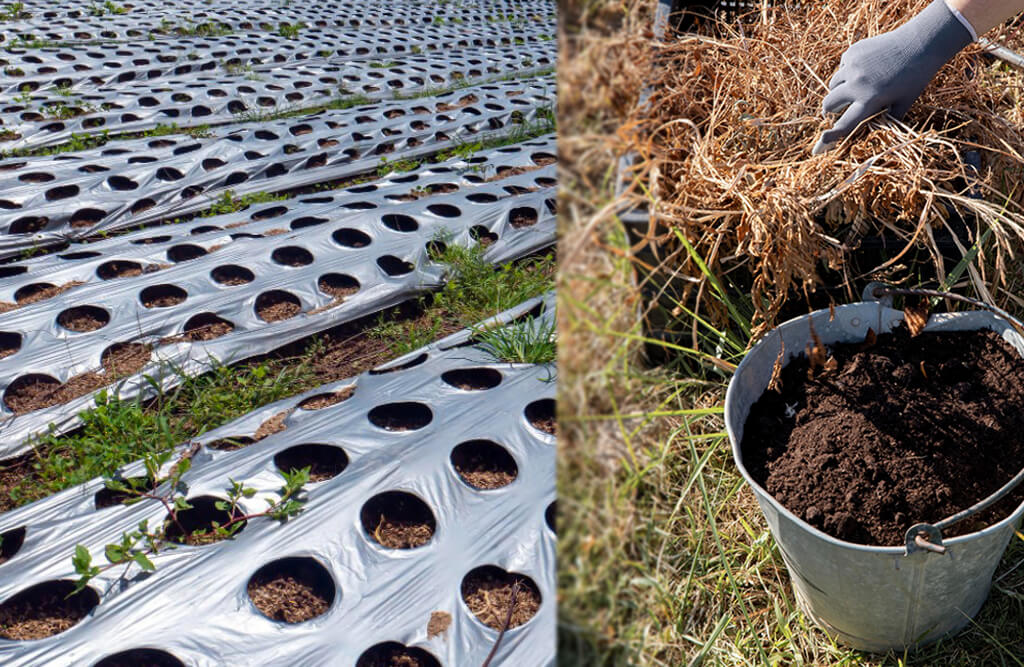
Mulching and cover crops are two primary agricultural techniques that provide farmers assistance in achieving better yields, cost-effective production, and ensuring soil health. Both these techniques offer farmers a literary approach to providing economic security and delivering high-quality crops. Cover crops aim to control weeds, incorporate organic matter into the soil, supply nitrogen, or serve as intercrops when regular crops are not being grown. The area covered by cover crops is approximately 1.94 million hectares, while mulching covers nearly 20 million hectares.
Cover crops, sown instead of harvesting, serve the purpose of controlling weeds, incorporating organic matter into the soil, and supplying nitrogen. They can also be cultivated beyond regular crops. These can be intercropped with various types of crops and can be grown annually, biennially, or in a twelve-month cycle. Mulching crops aim to conserve moisture in rain-fed areas and reduce the frequency of irrigation in upland regions. Managing field conditions for low-value crops becomes challenging, and it assists farmers in maintaining routines during dry spells or monsoons.
When employing the mulching technique for vegetable cultivation in the field, the first step is to plow the field thoroughly with a tractor. After that, mix the cow dung manure well into the soil. Now, create raised beds in the field using the lifted soil. Next, lay down the drip irrigation pipeline. Spread the plastic mulch carefully, pressing both edges firmly into the soil with a layer of mud. Mulching farming is an agricultural technique referenced for the advanced cultivation of various grains, horticultural crops, and perennial plants. In the process of mulching, agricultural residues or crop remnants are cut into equal pieces and spread over the field or beneath the crops. In cover crop cultivation, agricultural residues or crop remnants are cut into equal pieces and sown directly in the field. This agricultural technique, facilitated by direct pumping, can enhance water retention, improve crop protection, and ensure the possibility of efficient water conservation.
Cover crops, such as beans, barley, mustard, mustard seeds, wheat, oats, barley, sorghum, millet, and maize, are integrated with various crops. They can be grown annually, biennially, or in a twelve-month cycle and find use in farming in rotation with dry and cash crops. Mulching cultivation is a significant technique in agriculture that involves cutting crop residues into equal pieces, incorporating them into the field's yield, and improving production and quality. This provides crops with enhanced water retention capabilities, offering farmers the potential for increased productivity with minimal water usage.
Enhancing Crop Production: Mulching and cover crops play a crucial role in improving the yield of various crops. The incorporation of cover crops is an economically viable strategy embraced by small and marginal farmers in semi-arid regions to boost crop productivity. Mulching is predominantly applied in water-scarce areas to augment horticultural crop production. Frequently, drip irrigation systems are combined with mulching to modify the crop environment, leading to heightened yield and improved quality. Cover crops effectively manage weed proliferation, mitigate pests and diseases, and promote soil health over an extended period by regulating water content. Through pruning control and pest suppression, cover crops contribute to the long-term enhancement of soil health by increasing organic carbon levels. Species with a fibrous root system demonstrate high efficacy in soil erosion control, whereas those with thick roots are less effective. Utilizing cover crops as leguminous plants facilitates the conversion of residual nitrogen into protein. Consequently, cover crops can diminish the nitrogen requirements for subsequent crops and prevent nitrate leaching. The root growth of cover crops creates a favorable soil macrofauna habitat, enhancing soil pores for optimal plant growth.
Additional Income Source from Crops: Cover crops can provide farmers with extra income in the form of fodder or cash crops. It also reduces the quantity of essential organic fertilizers, resulting in lower input costs. In a regional experiment in rainfed areas, an eight percent increase in net income from rice grains was observed when cover crops were integrated with organic nutrient management and vermicomposting. This led to savings for farmers. On the other hand, when farmers have to purchase seeds, there is a cost associated with cover crops, along with labor costs for crop management. In conservation agriculture under a no-till system, special equipment is needed to handle a large amount of crop residues in the field, which poses a challenge for small farmers. Cover crops not only provide farmers with additional income but also offer them a golden opportunity for savings by reducing the quantity of necessary organic fertilizers.
Future of Mulching and Cover Crops in Agriculture: Mulching and cover crops, both agricultural techniques, are paving the way for the future of farming. These techniques not only provide farmers with an economically secure path but also ensure the cultivation of high-quality crops. Cover crops, strategically sown instead of harvested, play a crucial role in integrating organic matter into the soil, supplying nitrogen, and serving as an important intercrop. Mulching, a significant practice in horticultural farming, has the potential to conserve moisture in rainfed areas and reduce the frequency of irrigation in northern plains. The application of mulching in agribusiness is a critical technique, enhancing both production and quality. These techniques are essential components in agriculture, offering farmers better water management capabilities, increased production efficiency, and improved economic well-being. Adopting these methods is not just a step towards improving the present; it is an investment in the promising future of agriculture.